| |
|
|
|
|
|
|
|
|
|
|
| |
| |
 |
|
| |
田润德
编译
文/图 2020-06-15 19:36 |
|
| |
|
|
|
|
| |
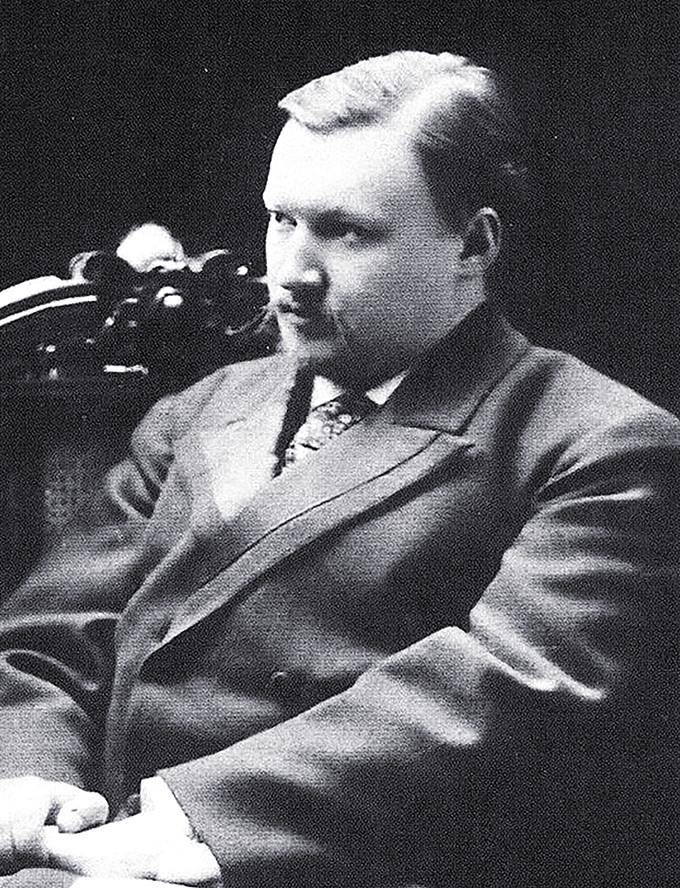 |
|
|
|
| |
亚历山大·格拉祖诺夫(Alexander
Glasunow,1865-1936) |
|
|
|
| |
|
|
|
|
| |
希拉里·哈恩演奏格拉祖诺夫《d小调小提琴协奏曲》 |
|
|
|
| |
|
|
|
|
| |
音乐历史上的今天
1928年6月15日,亚历山大·格拉祖诺夫代表苏联来到维也纳参加舒伯特百年诞辰纪念活动,在那里,他叛逃西方。
亚历山大·格拉祖诺夫(Alexander
Glasunow,1865-1936),俄罗斯作曲家,从小学习钢琴、爱好作曲,是里姆斯基·柯萨科夫的高足。他在一年半的时间里学完了全部作曲课程,十六岁时写出了第一部交响曲,并得到好评。他是个多产作曲家,写有八部交响曲、三部舞剧、五部协奏曲及大合唱、室内乐、钢琴曲和标题交响乐作品(如交响诗《斯切潘·拉辛》)等。他的作品,尤其是具有宏伟格局、华丽色彩的交响曲,在国内外都受到热烈的欢迎。
24岁在巴黎世界博览会举行的音乐会上,他亲自指挥演奏他的《第二交响曲》和交响诗《斯捷潘·拉辛》,从而确立了“新俄罗斯乐派”的真正胜利,也巩固了格拉祖诺夫在国外作为当代一名大作曲家的荣誉。他在音乐教学方面也成绩卓著,1899年任彼得堡音乐学院教授,1905年后任该院院长。1907年,英国剑桥和牛津大学授予他名誉博士学位。1906年始任彼德堡音乐学院院长直至1928年止。1922年苏联授予他共和国人民艺术家的光荣称号。格拉祖诺夫是19、20世纪之交俄罗斯古典音乐的杰出代表者之一,他的创作以光辉灿烂、富于魅力和娴熟的技巧见长,代表作:《第五交响曲》、《小提琴协奏曲》、交响诗《斯捷潘·拉辛》。
今日视频:1、希拉里·哈恩演奏格拉祖诺夫《d小调小提琴协奏曲》
;2、莱斯利·霍华德演奏格拉祖诺夫《芬兰民歌主题与变奏
》Op.72|。
|
|
|
|
| |
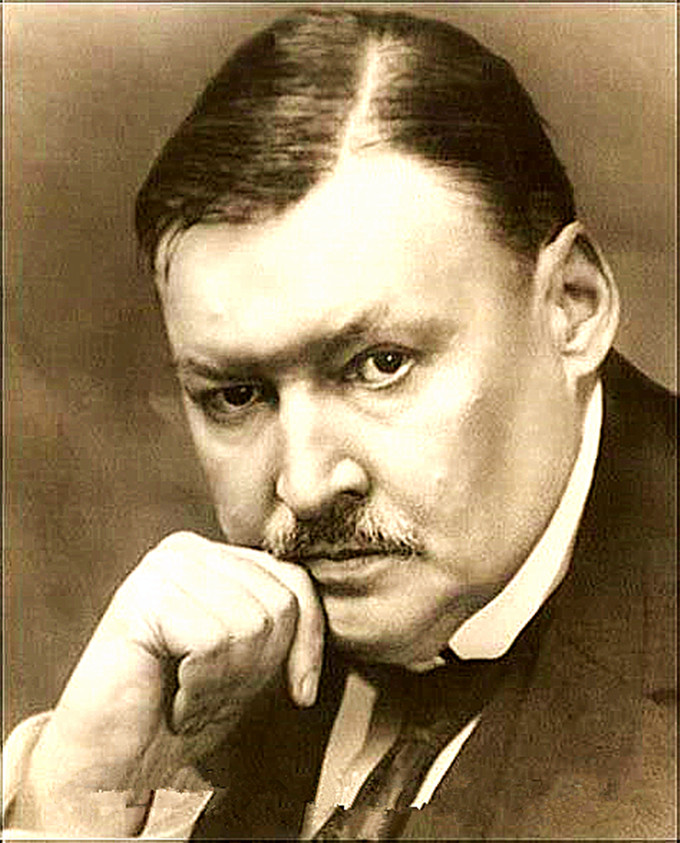 |
|
|
|
| |
亚历山大·格拉祖诺夫(Alexander
Glasunow,1865-1936) |
|
|
|
| |
亚历山大·格拉苏诺夫出生于1865年8月,是一个音乐神童-在他的第一部交响曲的首映式上,当一个16岁的年轻人接受雷鸣般的掌声时,观众几乎不敢相信他的眼睛。
后来,除了担任圣彼得堡音乐学院的指挥外,他还创作了一部令人印象深刻的作品,其精彩的编排令人印象深刻。
不寻常的是,glasunov在1936年去世之前,在所有时间流中都没有动摇,就像在勃拉姆斯时代一样,可以这么说,就像在19世纪末的时间胶囊中一样。
世纪。 我们演奏交响音乐会,室内乐和芭蕾舞音乐,来自“俄罗斯音乐的最后经典”。
格拉祖诺夫是里姆斯基科萨科夫的学生,是一位非常有才华的音乐家,17岁就开始作曲,他写了他的第一首交响曲,并在欧洲演出,获得了极大的赞誉。
多亏了艺术赞助人米托弗·贝利亚耶夫,格拉祖诺夫进入了一群遵循“强大的少数人”传统的作曲家。格拉祖诺夫和里姆斯基·科萨科夫一起完成了歌剧王子伊戈尔和亚历山大·博罗丁的第三交响曲,在他意外去世后,这些作品不完整。 |
|
|
|
| |
|
|
|
|
| |
Today in the
history of music
On June 15, 1928, Alexander Grazunov represented the Soviet Union at the
centenary of Schubert's birth in Vienna, where he defected to the West.
Alexander Glasunow (1865-1936) was a Russian composer and pianist.He
completed all the composition courses in a year and a half, and at the
age of sixteen he wrote his first symphony, which was well received.He
was a prolific composer, writing eight symphonies, three dance plays,
five concertos and cantata, chamber music, piano music, and title
symphonic works (e.g., symphonic poem Schepan Racin).His works,
especially his symphonies with magnificent patterns and gorgeous colors,
were warmly welcomed at home and abroad.
At the age of 24, he personally conducted his Symphony No. 2 and
symphonic poem Stepan Racin at a concert held at the Paris World's Fair,
thus establishing the true triumph of the "New Russian school" and
consolidating Grazunov's reputation abroad as a great contemporary
composer.He also excelled in music teaching, becoming professor of the
Petersburg Conservatory in 1899 and President of the Academy in 1905.In
1907, the Universities of Cambridge and Oxford in England awarded him
honorary doctorates.He was President of the Petersburg Conservatory from
1906 until 1928.In 1922 the Soviet Union gave him the glorious title of
people's Artist of the Republic.Grazunov is one of the outstanding
representatives of Russian classical music at the turn of the 19th and
20th century. His works are famous for their brilliance, charm and
skillful techniques, such as Symphony No. 5, Violin Concerto and
symphonic poem Stepan Racin.
1. Hilary Hahn: Violin Concerto in D Minor by Grazunov |
|
|
|
| |
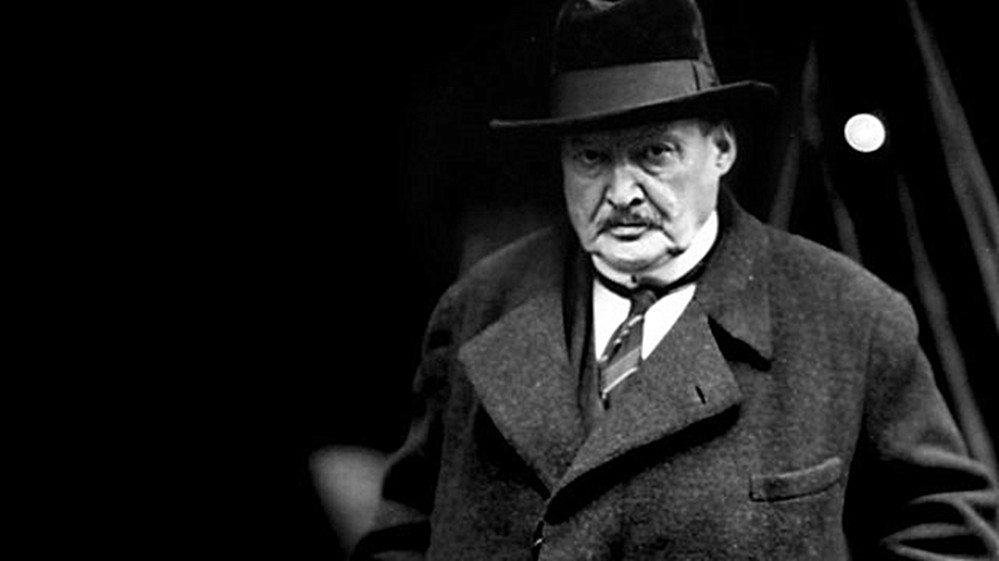 |
|
| |
亚历山大·格拉祖诺夫(Alexander Glasunow |
|
|
|
| |
Born in
August 1865, Alexander Glasunov was a musical prodigy - the
audience could hardly believe his eyes as a 16-year-old received
thunderous applause at the premiere of his first symphony.Later,
in addition to conducting at the St. Petersburg Conservatory, he
produced an impressive work with an impressive
choreography.Unusually, Glasunov remained in the current of time
until his death in 1936, as in the Brahms era, so to speak, as
in a time capsule at the end of the 19th century.Century.We play
symphonic concerts, chamber music and ballet music from "the
last Classic of Russian music".
A student of Rimsky-Korsakov, Glazunov was a very talented
musician and started composing at age 11. At 17, he wrote his
first symphony and it went on to be performed in Europe to great
acclaim. Thanks to patron-of-the-arts Mitrophan Belyaev,
Glazunov entered a group of composers who followed the
traditions of “The Mighty Handful.” Together with
Rimsky-Korsakov, Glazunov finished the opera Prince Igor and
Alexander Borodin’s Third Symphony, after he died unexpectedly
and left these works incomplete. |
|
|
|
| |
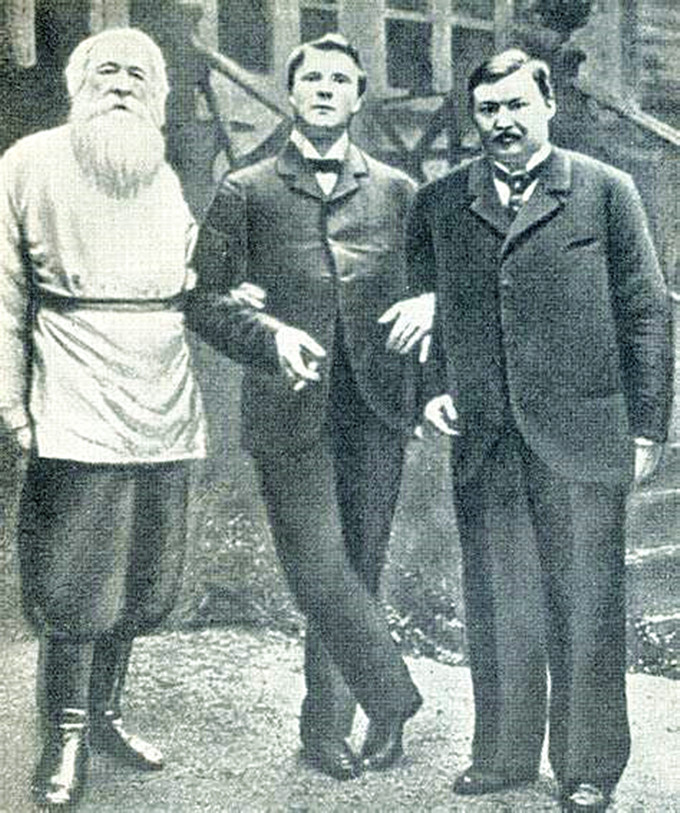 |
|
|
|
| |
亚历山大·格拉祖诺夫(Alexander
Glasunow)和斯塔索夫在一起 |
|
|
|
| |
File:Chaliapin F. (Шаляпин Ф. И.) 1900 with Stasov and
Glazunov.jpg |
|
|
|
| |
|
|
|
|
| |
莱奥波德·奥尔谈格拉祖诺夫
的《a小调小提琴协奏曲》 |
|
|
|
| |
在这首作品刚刚问世的时候,曾在作曲家亲自指挥下,由小提琴家埃费雷姆·津巴利斯特(Efrem
Zimbalist)演奏了它。在第一次排练时,当津巴利斯特演奏了开头的那几个小节之后,作者被他所表达出来的那种温柔而内在的怀乡情绪所震惊,他把乐队停了下来,间津巴利斯特“这真是我写的吗?”
这首协奏曲有着典型的俄罗斯的优美旋律,配器也十分精致,它是柴科夫斯基之后,革命爆发之前的典型代表作品。第一乐章中充满了痛苦而忧伤的情绪,出现了一个热情而纯扑的旋律,但又消失在内在的奇妙情绪之中
后这种情绪又转变为一种极度不安的乐段。华彩乐段包括了各种情绪,开始的那些句子是宽广、宏伟、然后变幻多端消失于若有所思的疑问
中。
最后一个乐章使用的素材是一首愉快而充满活力的舞曲,它是以嘹亮的军号声开始的。
我个人有幸亲眼见到格拉袒诺夫是怎样创作,他的《小提琴协奏曲》作品32号,这部绝妙作品是为我而写的,并由我于1904年2月在彼得堡第一次公开演奏,乐队指挥由作者亲自担任。
这部协奏曲由不间断的三个乐章组成。音乐的主要特点是抒情性的,同时它使小提琴演奏者有可能表现自己的高超技巧。这部作品是本世纪初写成的最优秀的小提琴协奏曲之一。
协奏曲以G弦奏出非常如歌的主题开始。这一歌唱性主题以各种不同的变化发展手法贯穿通篇协奏曲。它在管弦乐中也得到广阔的发展,直到独奏华彩乐段开始。在我编订的版本中,华彩乐段与原作中的一模一样,未加任何变动。从20小节处开始。速度变得越来越快。两个十六分音符
断奏(staccato),应用腕力奏的非常常轻。从22小节起速度相反变得越来越慢...... |
|
|
|
| |
|
|
|
|
| |
Leopold Auer on Glazunov's Violin Concerto in a
Minor |
|
|
|
| |
When it was first written, the violinist Efrem
Zimbalist performed it under the conductor himself.
At the first rehearsal, after Zimbalist played the
first few bars, the author was struck by the
tenderness and inner nostalgia he expressed, and he
stopped the band and asked Zimbalist, "Did I really
write this?"
The concerto, with its typical Russian melody and
exquisitely orchestrated, is typical of the
post-Tchaikovsky, pre-revolutionary work. The first
movement is full of pain and sadness, a passionate,
pure melody, but then it disappears into an inner
wonder that transforms into a deeply disturbing
passage. The cadenza encompasses a range of
emotions, starting with sentences that are broad and
grand, then morphing into wistful questions.
The last movement was a pleasant and energetic
dance, which began with a loud bugle sound.
I personally had the pleasure of seeing with my own
eyes how Grazonov composed his Violin Concerto, Op.
32, which was a wonderful piece written for me and
performed by me for the first time in Petersburg in
February 1904, with the conductor himself.
The concerto consists of three uninterrupted
movements. The main characteristic of the music is
lyricism, and at the same time it makes it possible
for the violinist to express his great skill. This
work is one of the finest violin concertos written
at the beginning of this century.
The concerto begins with the G string playing a very
songlike theme. This singing theme in a variety of
different ways of development throughout the
concerto. It also developed extensively in
orchestral music until the solo cadenza began. In my
edited version, the cadenza is exactly the same as
in the original, without any changes. We start at
bar 20. The speed is getting faster and faster. Two
sixteenth note staccato, played very lightly with
the use of the wrist. From bar 22 on, the speed gets
slower and slower...... |
|
|
|
| |
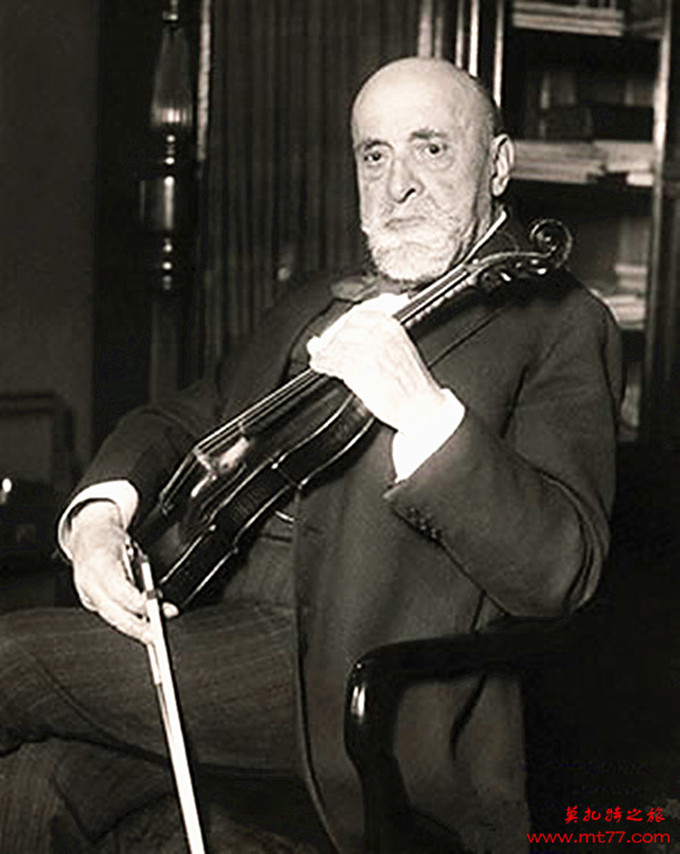 |
|
|
|
| |
莱奥波尔德·奥尔(Leopold
Auer 1845-1930) |
|
|
|
| |
莱奥波尔德·奥尔(Leopold
Auer. 1845年6月7日-
1930年7月15日)20世纪出著名的小提琴教授,俄罗斯小提琴学派创始人。奥尔出生在匈牙利的维斯普雷姆(Veszprem),家境贫寒。他八岁开始学习小提琴,启蒙老师是布达佩斯音乐学院的里德雷·孔涅(RidleyKohrk
)教授。后前往维也纳音乐学院师从奥地利小提琴家、教育家雅科布·顿特(Jacob Dont.
1815-1888)。在顿特教授的精心指点下,奥尔打下了扎实的演奏技术基础。以后经过了一段时间的旅行演出。他又前往汉诺威投师于著名的匈牙利小提琴教育家约瑟夫·约阿希姆(Joseph
Joachim, 1831-1907)门下。 |
|
|
|
| |
Leopold
Auer (June 7, 1845 -- July 15, 1930) was a famous
violin professor in the 20th century and the founder
of the Russian violin school.ORR was born in A poor
family in Veszprem, Hungary.He began violin lessons
at the age of eight, starting with professor
RidleyKohrk of the Budapest conservatory.After that,
he went to the Vienna Conservatory where he studied
under The Austrian violinist and educator Jacob
Dunt. 1815-1888.Under the careful guidance of
Professor Dent, ORR laid a solid technical
foundation.After a period of travel performance.He
went to Hanover to study under Joseph Joachim
(1831-1907), a famous Hungarian violin educator. |
|
|
|
| |
|
|
|
|
| |
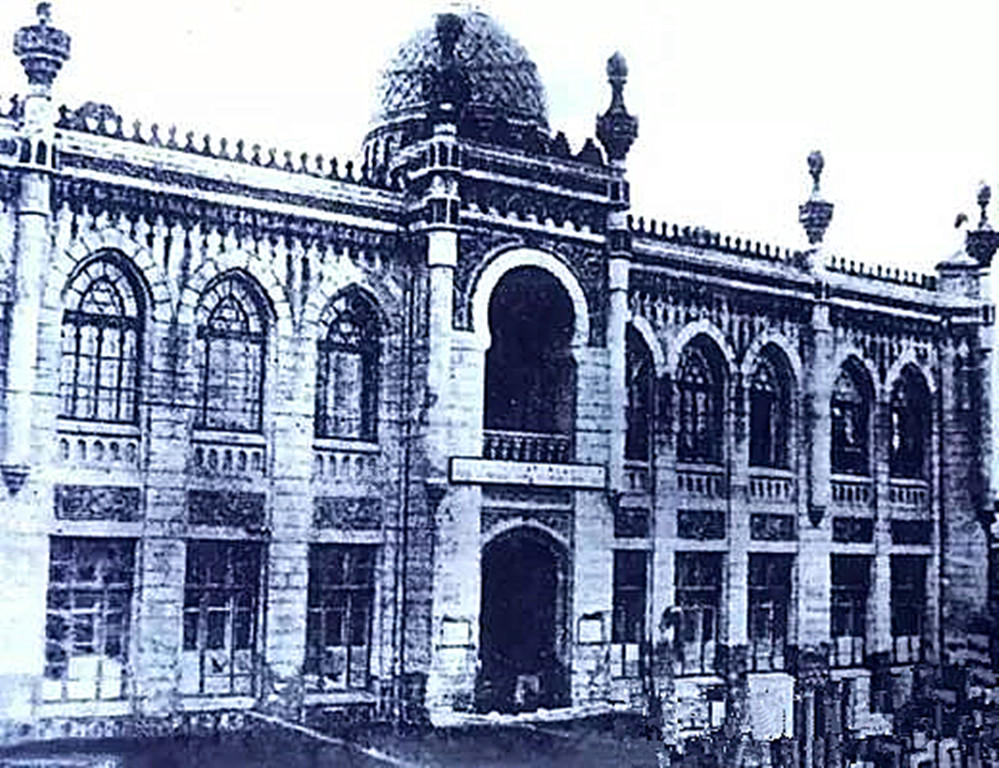 |
|
| |
哈尔滨历史上以格拉祖诺夫命名的高等音乐学校 |
|
|
|
| |
哈尔滨格拉祖诺夫高等音乐学校 |
|
|
|
| |
哈尔滨格拉祖诺夫高等音乐学校创建于1925年7月,是第二所正规的高等音乐学校,校址在今通江街86号那幢犹太风格建筑内。
校长是小提琴家戈尔德施京。此人早年毕业于圣彼得堡音乐学院小提琴专业,为了努力进取,他又赴德国柏林音乐学院继续学习。20世纪初,他与钢琴家迪龙女士组织了音乐艺术家演出团,在俄国的高加索地区从事传播高雅音乐的活动,后来到基斯洛沃德斯克、皮亚蒂戈尔斯克、叶欣图克等地巡回演出,影响巨大。后他被请到南高加索的巴库创办音乐学院,成为著名音乐家和音乐教育家。在巴库的7年中,他们举办了200多场音乐会,在当地音乐事业中起到了重要作用。1922年,他们往返于苏俄各大城市巡回演出。1923年至1925年,他们主要活动在莫斯科和圣彼得堡,并在莫斯科创办了夏里亚宾音乐学校。
1925年7月1日,大提琴家施贝尔曼、小提琴家戈尔德施京和钢琴家迪龙女士,在哈尔滨犹太教堂旁边创建了以俄国著名音乐家、圣彼得堡音乐学院院长格拉祖诺夫的名字命名的高等音乐学校。
1924年,犹太中学另迁新址。而这所犹太中学改为东省特别区立俄侨第一高等小学。1925年犹太著名音乐家、音乐教育家戈尔德施京和夫人迪龙在此创办了著名的格拉祖诺夫高等音乐学校,完全按照俄国皇家音乐学院的教学大纲进行教学。哈尔滨著名的犹太巨商斯基德尔斯基(颐园街3号的主人)因为喜爱音乐曾给予财力上的大力支持。到1928年,这所学校已有各种专业学生200多名。为哈尔滨培养了一大批优秀的音乐人才。1936年,不满日伪统治的戈尔德施京夫妇率领一批俄侨音乐家离开了哈尔滨,去往欧洲,音乐学校也随之停办。 |
|
|
|
| |
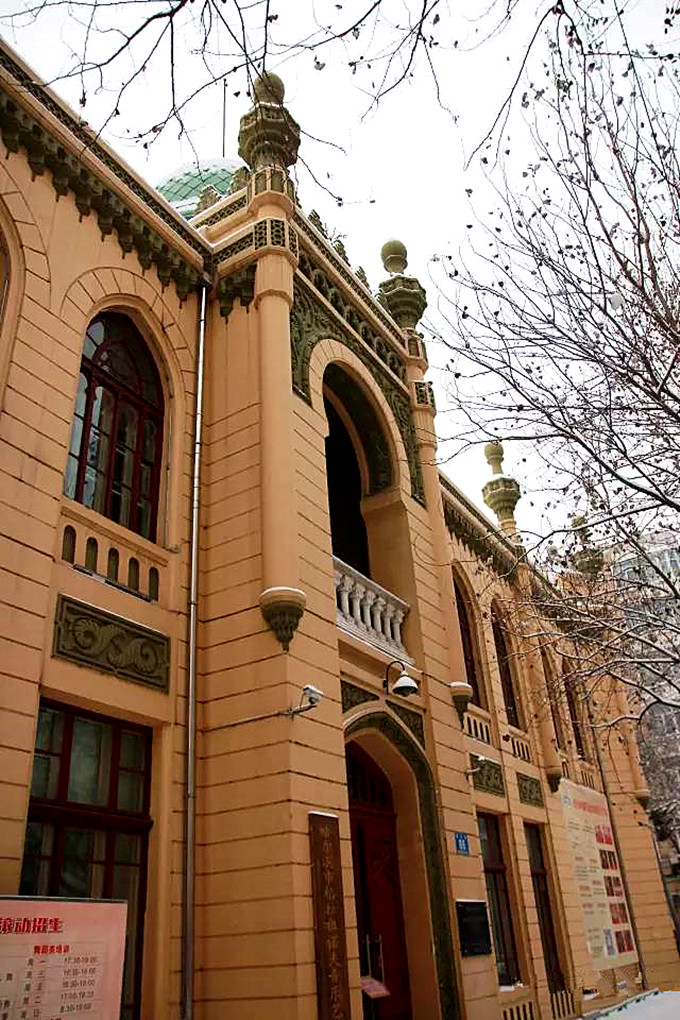 |
|
| |
哈尔滨今天的格拉祖诺夫音乐学校(田润德摄影) |
|
|
|
| |
Harbin Grazunov
Higher Music School
Harbin Grazunov Higher Music School was founded in July 1925, is
the second regular higher music school, the school site in the
present Tongjiang Street 86 that jewish style building.
The principal was Goldschking, a violinist.He graduated from st.
Petersburg Conservatory of Music and majored in violin in his
early years. In order to make progress, he went to Berlin
Conservatory of Music to continue his study.At the beginning of
the 20th century, he and the pianist Ms. Dillon organized a
troupe of musical artists, engaged in the spread of elegant
music in the Caucasus region of Russia, and later toured
Kislowadsk, Piatigorsk, Yentok and other places, which had a
great impact.He was invited to start a conservatory in Baku in
the South Caucasus and became a famous musician and music
educator.During their seven years in Baku, they gave more than
200 concerts and played an important role in the local music
industry.In 1922 they toured the major cities of The Soviet
Union.From 1923 to 1925, their main activities were in Moscow
and St. Petersburg, and they founded the Shariabin School of
Music in Moscow.On July 1, 1925, cellist Schbermann, violinist
Goldeshjing and pianist Ms. Dillon founded the higher Music
School named after the famous Russian musician And President of
st. Petersburg Conservatory Grazunov next to the Synagogue in
Harbin.
In 1924, the Jewish High School moved to a new location.The
Jewish middle school was changed into the first higher primary
school for Russian overseas Chinese in the special district of
the Eastern Province.In 1925, the famous Jewish musician and
music educator Goldshkin and his wife Delong founded the famous
Grazunov High School of Music, which is completely in accordance
with the teaching syllabus of the Russian Royal
Conservatory.Harbin's famous Jewish tycoon Skidelsky (owner of
No. 3 Yiyuan Street) gave financial support because of his love
of music.By 1928, the school had more than 200 students in
various specialties.Harbin has trained a large number of
outstanding musical talents.In 1936, the Goldshkin couple, who
were dissatisfied with Japanese puppet rule, led a group of
Russian and overseas musicians from Harbin to Europe, and the
music school was closed. |
|
|
|
| |
|
|
| |
 |
|
|
|
| |
圣彼得堡四重奏乐团(St.
Petersburg Quartet) |
|
|
|
| |
俄罗斯音乐学会圣彼得堡分会的弦乐四重奏(RMS);利奥波德·奥尔(小提琴一)、约翰·威廉·扎查里亚斯·皮克尔(小提琴二)、希兰尼斯·魏克曼(中提琴)、亚历山大·弗日比洛维奇(大提琴) |
|
|
|
| |
The
String Quartet of the Saint Petersburg branch of the
Russian Musical Society (RMS); Leopold Auer (violin
I), Johann Wilhelm Zacharias Pickel (violin II),
Hieronymus Weickmann (viola), Aleksandr
Verzhbilovich (cello) |
|
|
|
| |
|
|
|
|
| |
|
|
|
|
| |
【格拉祖诺夫】芬兰民歌主题与变奏 Op.72|莱斯利·霍华德 Lesile Howard
|
|
|
|
| |
 |
|
|
|
| |
|
|
|
|
| |
未得原作者编者授权严禁转载www.mt77.com任何内容 |
|
|
|
|
|
|
|
|
|
|
|
|
|
|


